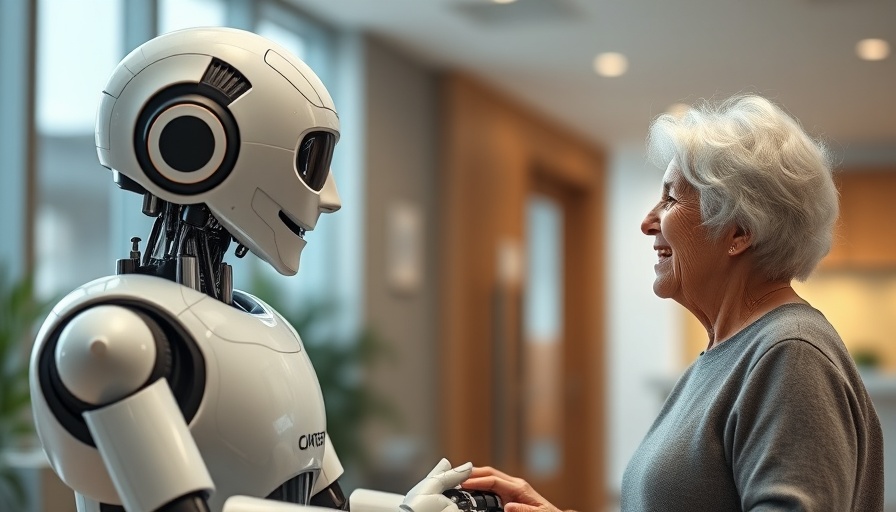
Robo-Companion: A Game-Changer for Elderly Care
In the ever-evolving realm of healthcare technology, the emergence of humanoid robots like ARI represents a significant leap forward, particularly in the context of elderly care. With the healthcare sector constantly seeking innovative solutions to assist both patients and practitioners, ARI has been introduced as a 'robo-companion', capable of engaging with patients in a hospital setting. This conversational robot, recently deployed at the Broca Hospital in Paris, showcases how artificial intelligence and robotics can work together to improve the patient experience.
The Benefits of ARI in Hospital Settings
As healthcare environments become increasingly complex and crowded, the need for effective communication tools grows. ARI has been designed to understand basic conversations while navigating the hustle and bustle of a busy hospital.
During trials, the humanoid robot was able to help elderly patients and their caregivers by providing directions and offering information about services, easing the stress of hospital visits. More importantly, these interactions aim to alleviate feelings of loneliness and anxiety that often accompany such visits, particularly for elderly individuals.
Enhancing Patient Engagement Through Technology
Incorporating ARI within hospitals aligns with broader trends in healthcare toward utilizing technology to enhance patient engagement. Dr. Maribel Pino, a cognitive psychologist associated with the ARI trials, emphasized that the robot has evolved to encourage communication. She stated, 'We saw people engaging with the robot,' highlighting that positive interactions can provide cognitive stimulation, especially beneficial for patients experiencing cognitive decline.
How ARI is Revolutionizing Elder Care
Historically, robots have been limited in their capability to interact with humans in social contexts. However, the SPRING initiative has shifted this paradigm. The studies conducted indicate that robots like ARI could significantly reduce the workload of healthcare staff by taking on non-medical tasks, such as navigating patients and providing them with relevant information.
The research indicates promise for widespread implementation of ARI-like robots in various health settings, ultimately aiming to create a supportive environment that focuses on the dual needs of healthcare staff and patients.
Integrating Technology While Navigating Ethical Considerations
As with any technological advancement, there are ethical considerations to account for. The deployment of humanoid robots in healthcare settings poses questions regarding patient data privacy and the legal framework that governs robot interactions. Following the European Union's Artificial Intelligence Act enforced in 2024, developers face strict regulations regarding patient data handling and the operational parameters for robots intended for use in healthcare environments.
The current limitations of robots such as ARI—being confined to specific areas and unable to roam freely—highlight the ongoing balancing act between innovation and ethics.
Future Predictions: The Role of Humanoid Robots in Healthcare
Specialists like Dr. Xavier Alameda-Pineda from the SPRING initiative speculate that the next few years could see a rollout of humanoid robots capable of more sophisticated interactions within healthcare settings. Improvements in AI training have allowed for better communication and understanding of social cues, suggesting that future robots may be equipped to handle complex conversations involving multiple patients.
This advancement is crucial as healthcare facilities strive not only for efficiency but also for enhancing patient experience through personalized interactions while ensuring that the technology arrives with a framework that keeps patient safety and comfort at the forefront.
Conclusion: Moving Towards a Patient-Centric Future
The introduction of humanoid robots like ARI signifies a potential transformation in patient care within hospitals. By reducing the burden on staff and providing engaging interaction for patients, these innovations could redefine how care is delivered. For health practitioners aiming to stay informed, understanding the implications of integrating technology into patient care is vital.
As we move forward into an era increasingly shaped by technology, keeping ahead of these trends not only enhances practice mastery but also ensures that health practitioners can provide the best possible care for their patients in a rapidly changing environment.
 Add Row
Add Row  Add
Add 






Write A Comment